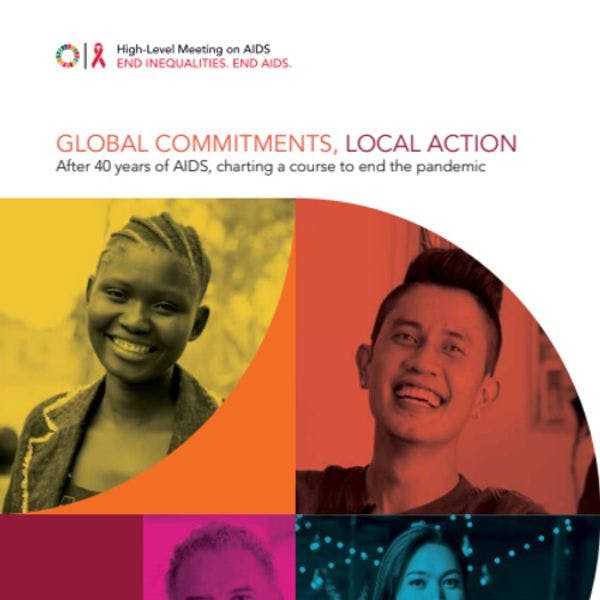UNAIDS
Compromisos globales, acción local: Tras 40 años de SIDA, trazando una ruta para acabar con la pandemia
ONUSIDA urge a los líderes mundiales a adoptar una declaración política audaz sobre el VIH en la Reunión de Alto Nivel de la ONU sobre SIDA. Más información, en inglés, está disponible abajo.
It took 10 more years for the world to take concerted action. In 2001, the United Nations (UN) General Assembly convened the first-ever special session on a pandemic. By then, AIDS-related illnesses had become the number one cause of death in Africa and the fourth leading cause of death worldwide. The collective voice of affected communities had also grown, marshalling networks of support and demanding stronger action from governments. An innovative joint programme of entities across the UN system, UNAIDS, became operational in 1996, urging countries and communities in every region to join a new global pandemic response.
The General Assembly’s 2001 Declaration of Commitment on HIV/AIDS was a major milestone in global leadership on the right to health, and it set a common agenda that propelled global efforts to reverse the pandemic’s course. Activists living with HIV successfully pushed for affordable HIV treatment to reach developing countries, and the number of AIDS-related deaths tumbled. New HIV infections also decreased. Global momentum was sustained through high-level meetings of the General Assembly in 2006 and 2011. When world leaders gathered at the UN General Assembly for a fourth time to confront HIV in 2016, ambitious targets were set for 2020, with the aim of ending AIDS by 2030, as called for in the Sustainable Development Goals (2).
Five years later, dozens of countries across a range of epidemic settings and economic classifications have reached or exceeded many of those targets. These countries have shown that a pandemic that seemed almost unassailable 20 years ago ca be brought under control. However, other countries and entire regions are off-track. In some places, previous gains are being reversed, and COVID-19, conflicts and humanitarian emergencies have created additional challenges. Across all regions, the most vulnerable and stigmatized populations are most often left behind. Key populations continue to be marginalized and criminalized for their gender identities, sexual orientation, livelihoods and dependencies, or for simply living with HIV.2 Gender inequalities and gender-based violence restrict the rights of women and adolescent girls, including their ability to refuse unwanted sex or negotiate safer sex, and to access HIV and sexual and reproductive health services.
HIV remains a pandemic driven by inequalities. When the data from UN Member States’ 2020 reports to UNAIDS are aggregated, the unfortunate conclusion is that all of the global targets for 2020 have been missed. Time is running out on the global effort to end AIDS by 2030.
